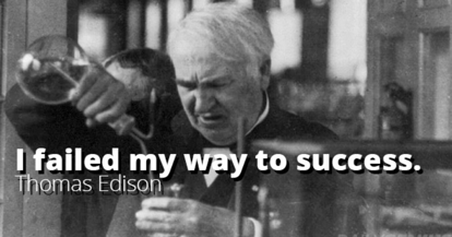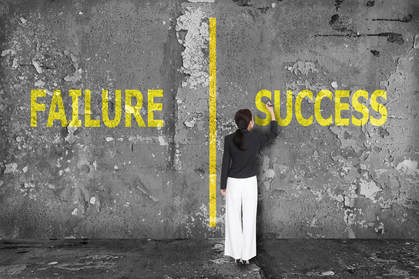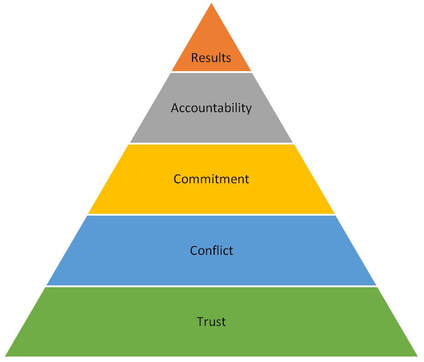|
You only have one chance to make a great impression. What impression is your business having on your new recruit during their onboarding journey? Are you smashing their expectations out of the park and leaving them bounding into the office for more? Are you meeting the expectations you set out during the recruitment process? Or is the gap between their expectations and the reality like house hunting?  New employee expectations are at their highest on day 1 of the new job. The promised land awaits. Everything that was not right about their previous role is about to be long forgotten as they enter the land of dreams. The reality however, can often be quite different and bring the eager new recruit crashing down to earth rapidly. As an employer it is ideal that the gap of expectations vs reality is kept to a minimum to maximise engagement. How you welcome the newest member of your team from day 1 right through their early months can leave a lasting impression. What do new employees want when they start?
1. A meeting with their manager on Day 1 Sounds obvious right? Adam Grant reveals in his article, The Surprising Value of Obvious Insights, that people analytics experts at Google studied effective ways to onboard new hires. Too busy is not a good enough excuse to skip this crucial welcome meeting on day 1. The value of the manager spending time with the new hire talking about their role and responsibilities and then holding regular check-ins during the initial months can bring the new starter up to speed month faster than allowing them to work it out. 2. Having what they need to get started Nothing says 'welcome' like a clean desk and having the tools of the trade working and operational from the start. This approach sure beats clumsily chasing IT around the office and working it out as you go. Setting the scene that you are professional, efficient and organised will go a long way to ensuring you set the right first impression with your new starter. The sooner they have the tools to get going the sooner they can start the process of coming up to speed and adding value. 3. A plan for the first few months A new starter can only absorb so much information. To avoid information overload and forgetting the important parts, schedule a plan to best utilise your new starters' energy and enthusiasm. Include the people to meet, the meetings to attend, key compliance training and information gathering plus a mix of learning, observing, contributing and doing to keep momentum. Having a well-structured plan will minimise the new starter anxiety that they have to know it all in the first week. A plan is a good way to place the control back with the employee to get the important tasks complete and find their way in their role in a way that suits their style. 4. A lunch or social event as an informal way to spend time with the team All work and no play can set a rigid first impression. As soon as possible hold a team lunch, morning tea or if you have a small team go out for coffee or for a walk around the block or the nearest park. In an informal and relaxed setting, the culture and team dynamic will be easier to tap into for the new starter and the barriers will more easily be broken down. Creating a positive team dynamic is a fast way to alleviate new starter angst and ensure a smooth transition into the team. 5. A buddy or go-to person to answer all the questions no one wants to ask A buddy is an informal relationship with a colleague and presents a safe space for the new employee to nut out the nuances of the company and the role with no judgement. Questions like, what was that person’s name sitting in the corner? When do we have the company all hands meeting? What was the name of that system that does what I need for my role? All the questions that a new employee has, to learn about company culture, or to get that introduction to the person who can help with their project can be answered by a buddy. Sapling HR, experts in onboarding, kindly offer a Free Buddy Program Playbook on their site. Their guidance is to ensure that the buddy program is strategic to get maximum impact. They report that 56% of new hires want a buddy during their first week, and, if run well for the recipient, they will be more likely to pay it forward and help the next new starter. None of these ideas are unique or difficult to implement. The difference that they can make if implemented for a new starter can be the difference between whether they will stick around for the long haul or take off during probation. The positive impacts of a good onboarding process are outlined by Cox Purtell who state; “It’s estimated that 50% of senior outside hires fail within the first 18 months, and up to 20% of employee turnover happens in the first 45 days. Employees who complete a great onboarding process however, are 58% more likely to be at the company three years later. A structured, well-thought out onboarding process not only helps new employees feel welcome, but it lays the foundation for a good, long term relationship.” A few tried and tested steps can leave a positive and lasting impression with your new starter and get them up to speed and integrated into the team and the company faster and more effectively. It is my belief that no one starts a new role with the intent of performing poorly. Set your new employees up for success from the minute they walk through the front door and make sure their expectations are blown out of the water. Contact [email protected] for help with your onboarding process
0 Comments
 Don’t make your employees feel guilty for taking annual leave. Studies suggest that after a holiday, workplace productivity increases, mental health is improved and life expectancy can be extended. Paid annual leave is an employment entitlement that all Australian workers receive under the National Employment Standards. Why then, do so many employees take pride in banking their annual leave and saving it for a rainy day? Here are a few theories:
Irrespective of the reasons, it is vital that you support your workers and encourage annual leave – without the guilt trip. If you are a small to medium business and have workers who you cannot afford to do without, even for a holiday, you have a risk to your business that needs to be addressed. Subject matter experts are difficult to clone, but everyone needs a break. Put their work on hold if you cannot get another to fill in. If they are the sole keeper of “tools of the trade” then you will need to get that information out of their head fast. The last thing you want is for them to leave your business and take all that information with them. From a commercial point of view, the annual leave balances of your workers are carried as a liability on your books. Each time you increase salaries, the liability amount increases. The benefits of a break are endless. Taking time out allows workers to refresh, refocus and bring new vigour to their role. As a business owner, lead by example and take time out to ensure you are bringing energy, enthusiasm and new ideas to the business to keep it fresh. Shannon Kuykendall, CEO of her own business, Up Automation, makes taking holidays a part of the company culture. She acknowledges “when I take care of myself, I can better take care of my clients and my team”. Instead of a few days here and there, take at least one break each year for at least two weeks. Often it will take the first week to really switch off. The second week is when the magic happens. The real relaxation seeps in and leads to a re-energised, creative state of body and mind. Tips before annual leave starts;
Upon return from leave, take time to ask the worker about the trip before getting straight into business. Nothing ruins a holiday glow or caused disengagement faster than a pile of work to get through that has been saved up. Consider deleting all emails that have amassed while on leave. Organise a catch up with a manager or colleague for the lay of the land. Reading through copious emails can amount to hours of unproductive time. Take a break, start planning a holiday and explore the world. It will provide a different perspective and help get you in touch with what is really important in your life. When you return to the office you may find that you are more engaged and have more clarity and focus. If you need support with a Leave Policy or want clarification on Leave entitlements, get in touch with us at [email protected]  I think it only fitting that I reference Culture after my recent Culture Summit conference in San Francisco. Culture – I believe best summed up as “what your employee’s do when no one is watching”. That is a good measuring stick to what is a fluffy and intangible topic. The Cambridge dictionary defines culture as “the way of life”. What one person does when no one is watching will likely differ from another. One’s way of life will likely also differ from the next person. So why do we insist on creating a culture or “way of life” in an organisation that brings together people from all different perspectives and expect that it will always be a cohesive & sticky process? What is a top question people ask at an interview - “what is the culture of this company?”. The text book answer is, we’re not hierarchical, open door policy, we live by our Values (which you can see in the foyer), we are very inclusive, management listen…the list goes on. The new starter nods and gets wide eyed at imagining this mirage. When the newbie comes on board, how do they learn how to adapt to this new “way of life”? By watching your company Rituals in action. A ritual is defined “a repeated set of actions”. Let’s get nostalgic for a second and look to our home lives past and present. What does dinner time conjure for you if you think back to your childhood? This is the journey, Susan Lee, Head of People at Warby Parker took her audience on at The Culture Summit when she shared that growing up in her household everyone would sit down at the dinner table to eat a cooked meal. This happened each and every night and became a family ritual. Consider a new person on their first day – what rituals would they notice in your workplace? If you don’t have any, some for consideration could be:
During your recruitment process, when you get asked the question you can say – we all come together daily to share the daily news over coffee, we share positive feedback within our team, we have no devices in team meetings to distract from the person speaking. This gives the job seeker a tangible item and a picture – they can imagine working for you. With key rituals in place, your culture or “way of life” becomes more measured and confined. It is more palatable for new starters and becomes easier for them to adapt, survive and thrive. Perhaps the question we should be asking in interviews is “what rituals do you have”? For clarity on your people management, contact [email protected]  You know that disengaged people are costly to your business. You probably know that it’s difficult to engage these people, and it may even be a lost cause, so why bother? What does people engagement really mean? It is the free breakfast, is it the ping-pong table in the corner of the office? Is it the state-of-the-art office, the casual dress Friday, the latest iPhone or Mac computer, the beer in the fridge, the work from home policy, the maternity/paternity leave policy, the gym allowance, the blah, de blah de blah? Actually, these perks are just that, perks. They are not benefits and as such do not drive an increase in people engagement. They are a benefit for those that actually see benefit in these things.  So, if this does not create engaged employees, what does? Asking their opinion and valuing it – or at least considering their input rather than dismissing it. Employees want to be heard, and they want to feel that what they have to offer is contributing to the organisation. If you want to create a disengaged workplace, shut people down and you’ll succeed. No employee starts a new job with an attitude of not wanting to give their all – they start wanting to make a contribution. Let them. Encourage their contributions and let them flourish. Listen to their ideas, praise them in front of their peers for their contribution, allow employees the freedom to discover new ways of doing the same old thing to build efficiency. Consider having them present to the team on something that they’re passionate about. As a manager, provide consistent feedback and seek feedback from each employee. Talk to your people rather than managing them from afar and basing it on the data in a spreadsheet or report. Employees will seek to be heard and valued more than they seek benefits. I know of one organisation that offer a fantastic maternity leave policy.. There is still disengagement in parts of that organisation because people get overlooked for promotion opportunities and their views are not taken into consideration.
This type of disengagement leads to turnover. This company also offers drinks each Friday, employee parties every month and benefits out the wazoo. People still consider leaving based on the sole reason that they are not heard. To create an engaged workplace, fight for your team and ensure they are heard and their opinions are valued. Don’t overload already overworked people. If you have to manage out under-performers, do so....swiftly. People engagement is more than free beer, ping-pong tables and casual Fridays. These benefits add to fun in the office but it is just that...fun. Engagement will add value for your customers and it will lead to your success as a business. Seek to create an environment where people don't want to leave.  As we reach the end of another financial year take stock of your financial situation and look at what your people are really costing your business. Use this time to assess if you have people who are turning up in body but not in mind. Chances are you have people in your team who are disengaged to some extent and it is costing your business money. How energised is your team right at this moment? Are they bursting into the office each day ready to give their all? Or is their energy depleted? Senior VP of Retail at Apple Inc, Angela Ahrendts gives a remarkable Ted Talk on Human Energy and how it, “singlehandedly has the power to unite and transform companies and communities”.
The Human Energy Conversion model below illustrates how this transfer of energy leads to results: (source: Human Science) Five Energy Blasting Levers:
To work with The People Scene please make contact – [email protected] To promote a culture of creativity and innovation you must get comfortable with Failure. Put a positive spin on it. Failure is an inevitable side-effect in any business culture that promotes new ideas and innovative ways of working. In Dan Pallotta’s Ted Talk, he famously states, “when you prohibit failure, you kill innovation”. You simply can’t have innovation without embracing mistakes that will happen. You have to take the good with the learnings. antibiotics, the light bulb, Dyson vacuum cleaners, Post-It notes, the Jacuzzi, WD-40 and Viagra which was initially designed to help cure chest pain. Innovation does not need to be on a world changing scale. Your business may find innovative solutions to your client's issues. This may not make a ripple of global impact but have a mammoth impact for your client. How can you embrace failure and promote innovation in your business?

If you are inspired to work with The People Scene please make contact – [email protected]
One of the key takeaways was Accountability. We all have tough days when we want to just turn up and coast. If you feel accountable to your team you are more likely to push through those moments. You know that your team depend on you and your contribution. You get in there and just do it.
Your Accountability Toolkit:
Communicate your business strategy
At the end of the cycle you go back to re-set the strategy and start all over again. You can have a business full of great individual talent but ultimately success comes from team work. A high performing team are accountable to one another and will ultimately put themselves on the line for the greater good of the team. If your team needs to discover their strategy for success get in touch – The People Scene HR Kickstart program can help you out and set you on the path to high performance |
Details
Archives
February 2019
|











 RSS Feed
RSS Feed